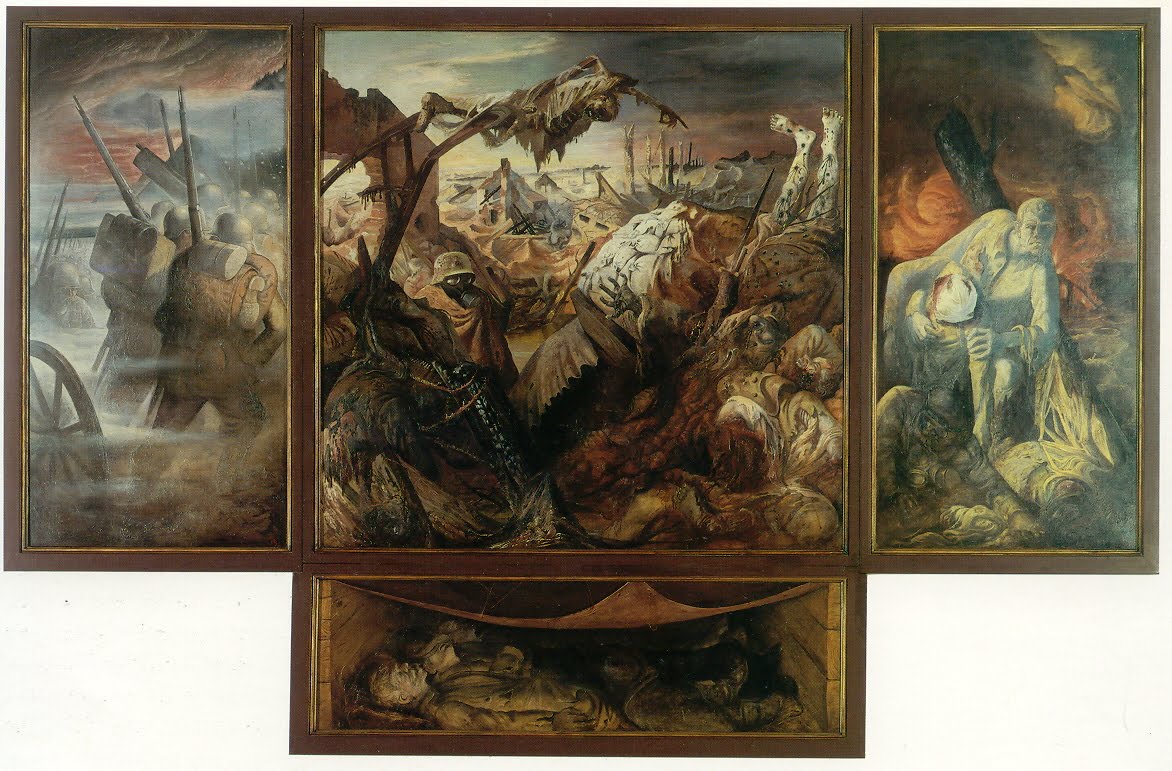
For many Christians, Kanye West’s new album Jesus is King is the perfect example of a piece of Christian art. It is wholesome, uplifting and features the highest quality of craftsmanship, but most importantly, its content is unapologetically, relentlessly and worshipfully Christian.
Therefore, I was not surprised to stumble across some responses to Jesus is King putting it forward as evidence that Christian artists should be much more confident in proclaiming Christ through their art and not shying away from filling their work with explicitly Christian content . It seems like an open and shut case. Kanye West can top the charts with an album of simple gospel proclamation, so why are other Christian artists so reluctant to do so? I mean, what else could you want to make art about?
I may sound a bit contrarian, but I’m not so sure. While I appreciate the need to proclaim Christ, I think that pressuring artists to do so in their work shows a fundamental misunderstanding of what art is, as well as a confusion over why Jesus is King is shifting so many units among people who are not Christians.
Art as a vehicle for our message?
A very common Christian view of the arts is that they are primarily valuable as a vehicle for our message. Art, in whatever from it might take, has a powerful communicative power, and we have a message that we are very keen to communicate, so – this view goes – if only we could use this aspect of human culture more proficiently, it would maximise our evangelistic effectiveness.
This seems well intentioned but also somewhat naïve. I would, of course, agree that art has a powerful communicative power. I recently heard art described as a Trojan horse. Its ‘emotional charge’ (as philosopher RG Collingwood put it) opens the doors of your attention and possibly affection, and before you know it, you are considering and probably warming to beliefs, opinions and maybe even entire worldviews that you wouldn’t have given the time of day to otherwise.
In a world saturated with marketing and advertising, people are getting more and more suspicious of manipulative techniques.
However, while all of this is true about how art affects people, it is probably an unhelpful way to view art generally. If you set about making art with this in mind, you will probably end up producing propaganda. One of the problems with this is that in a world saturated with marketing and advertising, people are getting more and more suspicious of such techniques. This means that art produced in this way can actually have the opposite effect, and if people feel their emotions being pulled in a certain direction by a piece of art, they instinctively bolt the gates – not just to that piece of work, but to the group it speaks for.
In any discipline, art made with an obvious agenda is usually well received by those who are already on board with that agenda, but it is resisted and even resented by those who are not.
Engaging in a conversation through the arts
Art, I think, should be viewed more as a way of entering into a conversation. It involves speaking one’s mind, but it also involves listening. In a conversation, subtleties of body language and tone of voice are key; in art, nuance, empathy and vulnerability are necessary. Importantly, art works are rarely viewed in isolation, but are part of a process, involving an artist’s whole body of work, and even his or her life as a whole.
The typical Christian approach to evangelistic art is to treat it as a megaphone to raise the volume of our message in individual outbursts. We interrupt what everyone else is talking about, shout something about Jesus, then run off. This is not a very winsome way to approach the art of conversation and it is an equally poor way of approaching art as conversation.
Now, let’s consider Jesus is King in this context. Musically, it is very polished, and in places I think inspired. Lyrically, it is very simple and blunt. Some think of this as a strength, others as a weakness, but the fact that people are thinking about it at all shows that people have willingly entered into the conversation with Kanye. The reason for this is quite simple: he has put time into participating in this particular conversation and, for all his antics, has proved himself a highly engaging conversationalist.
Since his earliest releases, he has exhibited a fan-boy enthusiasm for hip-hop culture and a love for the art form. This has earnt him a listening from those within his specific discipline. On top of this, although he is infamous for saying and doing things that are, let’s say, a little bit off the wall, his tendency to fill his music with exactly what he is thinking at any particular moment has meant that people feel like they have some sort of connection with him, and – most importantly – that they relate to him.
We interrupt what everyone else is talking about, shout something about Jesus, then run off. This is not a very winsome way to approach the art of conversation
This means that Jesus is King, in the context of the conversation, is not the simple (even possibly simplistic) work that it appears to be, taken purely on its own merit. It is an unexpected (although not entirely out of character) left-turn on a journey that many people are already heavily invested in.
If Jesus is King was Kanye’s first album, it would not be trending worldwide, just as if Stormzy had released Blinded by Your Grace as his first single, he would not have been invited to play at Glastonbury. They didn’t enter the conversation there, and they probably couldn’t have done.
Expressing yourself honestly through the arts
Interestingly, Kanye’s approach to art making has remained fairly consistent throughout his winding career. He has always justified his media outbursts and the more unsavoury elements of his art, by arguing that it is his job, as an artist, to express himself; to refuse to pretend and instead to faithfully represent in his work what is going on in his head.
In the past this has led him to shoot from the hip on political and social issues and also to unburden the salacious contents of his id on to his listenership. Now, he has decided to follow Jesus and with the fresh faced enthusiasm of a new convert, he is continuing in the same vein- he is being himself. He may well have mixed motives in the whole affair (don’t we all?) but the interpretation of Jesus is King that I find least likely is that it is the product of a calculating mind, trying to tap a certain market. Kanye has spent years killing his editor, often at great expense to his personal credibility, so I don’t see why he’d change that particular habit now.
He seems to be making music about Jesus, because, at this particular moment in time, he loves Jesus. Long may that love continue and grow!
What can we learn from Kanye?
When I reflect on Jesus is King then, I don’t see compelling evidence that Christians should make art that focuses exclusively on Christian content. It is also not a clarion call to use the arts to proclaim the gospel. It is instead an encouragement to Christian artists to join the conversation. To step out of the safety of the Christian subculture, and become a faithful presence in their artistic cultures. This will probably only be possible if they are somewhat more diverse in their content than Kanye is on Jesus is King.
Just to be clear, I am not suggesting that Christian artists should cunningly hide their allegiance to Christ and pretend to be interested in other things, until people take the bait and they can reel them in!
Underpinning my understanding of how a Christian should engage in the arts is the belief that living for Jesus doesn’t mean that we are only interested in things that are obviously of a Christian nature. By his light, all things become brighter, and so Christians should be people who are interested in, and excited about all sorts of elements of life as things that have been given to us as gifts from God.
The musician and songwriter T Bone Burnett put it brilliantly, when he said:
“If Jesus is the Light of the World, there are two kinds of songs you can write. You can write songs about the light or you can write songs about what you can see from the light. That’s what I try to do.”
Art is a tool by which we can explore the depths of what it means to be a human being, and, as Christians, we should be able to do that in the most profound way; in a way that finds many universal points of reference, but that also authentically and beautifully leads people to the one who is the true human, the perfect image of God.
By God’s grace (let’s hope) Kanye West has gained a platform for the gospel by appealing to the more transgressive tastes of the masses. That’s how he got into the conversation. If you’re a Christian artist, you can’t do it like that, but in a funny way, Kanye’s model of honesty and openness is very much something that we should emulate. We should love God and make art about whatever we will, as Augustine would have said if he’d decided to contribute to this particular discussion!
Give artists space to make authentic, weird, silly, earnest, abstract work… they will get into conversations with people that you never will
If you are a church leader, then, please do not use ‘Jesus is King’ as the blueprint of how the Christian artists in your church can now reach the world with the gospel. Instead train artists up in godliness and give them space to make authentic, weird, mind boggling, silly, earnest, abstract work that may seem like a total waste of time to you, but is their way of processing what is going on in their heads. By doing this, they are likely to get into conversations with people that you never will.
And for all of us, let’s celebrate what seems to be going on in Kanye West’s life and also celebrate the existence of an album that is going to direct millions of people’s attention towards Jesus, when, without it, they wouldn’t be thinking about him at all.
And, I know I may not take you all with me on this one, but I’m praying that this is his last gospel album. It would be a travesty for a Jesus following Kanye West to be relegated to just being a successful CCM artist!
This article first appeared in a slightly edited form on the ThinkTheology blog.













 Rating system: I consider 3 aspects of the film: the script, the whole production and finally how strongly the film impacted me and provoked powerful ideas and intense conversation. In each category I give marks out of 10.
Rating system: I consider 3 aspects of the film: the script, the whole production and finally how strongly the film impacted me and provoked powerful ideas and intense conversation. In each category I give marks out of 10.






















